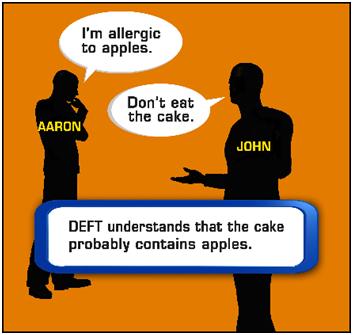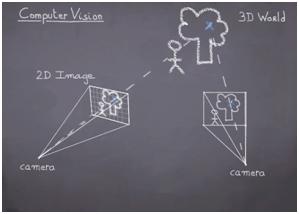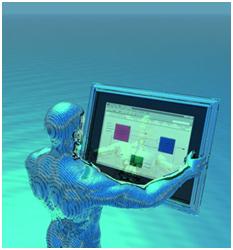Artificial Intelligence
We call ourselves Homo sapiens – man the wise – because our intelligence is so important to us. For thousands of years, we have tried to understand how we think; that is, how a mere handful of matter can perceive, understand, predict, and manipulate a world far larger and more complicated than itself. The field of artificial intelligence, or Al, goes further still: it attempts not just to understand but also to build intelligent entities.
AI is one of the newest fields in science and engineering. Work started in earnest soon after World War II, and the name itself was coined in 1956. Along with molecular biology, AI is regularly cited as the “field I would most like to be in” by scientists in other disciplines. A student in physics might reasonably feel that all the good ideas have already been taken by Galileo, Newton, Einstein, and the rest. AI, on the other hand, still has openings for several full-time Einsteins and Edisons
Al currently encompasses a huge variety of subfields, ranging from the general (learning and perception) to the specific, such as playing chess, proving mathematical theorems, writing poetry, driving a car on a crowded street, and diagnosing diseases. AI is relevant to any intellectual task; it is truly a universal field.
Some AI applications are mentioned below:
- Game Playing
- You can buy machines that can play master level chess for a few hundred dollars. There is some AI in them, but they play well against people mainly through brute force computation–looking at hundreds of thousands of positions. To beat a world champion by brute force and known reliable heuristics requires being able to look at 200 million positions per second.
- Speech Recognition
- In the 1990s, computer speech recognition reached a practical level for limited purposes. Thus United Airlines has replaced its keyboard tree for flight information by a system using speech recognition of flight numbers and city names. It is quite convenient. On the other hand, while it is possible to instruct some computers using speech, most users have gone back to the keyboard and the mouse as still more convenient.
- Understanding Natural Language
- Just getting a sequence of words into a computer is not enough. Parsing sentences is not enough either. The computer has to be provided with an understanding of the domain the text is about, and this is presently possible only for very limited domains.
- Computer Vision
- The world is composed of three-dimensional objects, but the inputs to the human eye and computers’ TV cameras are two dimensional. Some useful programs can work solely in two dimensions, but full computer vision requires partial three-dimensional information that is not just a set of two-dimensional views. At present there are only limited ways of representing three-dimensional information directly, and they are not as good as what humans evidently use.
- Expert Systems
- A “knowledge engineer” interviews experts in a certain domain and tries to embody their knowledge in a computer program for carrying out some task. How well this works depends on whether the intellectual mechanisms required for the task are within the present state of AI. When this turned out not to be so, there were many disappointing results. One of the first expert systems was MYCIN in 1974, which diagnosed bacterial infections of the blood and suggested treatments. It did better than medical students or practicing doctors, provided its limitations were observed. Namely, its ontology included bacteria, symptoms, and treatments and did not include patients, doctors, hospitals, death, recovery, and events occurring in time. Its interactions depended on a single patient being considered. Since the experts consulted by the knowledge engineers knew about patients, doctors, death, recovery, etc., it is clear that the knowledge engineers forced what the experts told them into a predetermined framework. In the present state of AI, this has to be true. The usefulness of current expert systems depends on their users having common sense.
- Heuristic Classification
- One of the most feasible kinds of expert system given the present knowledge of AI is to put some information in one of a fixed set of categories using several sources of information. An example is advising whether to accept a proposed credit card purchase. Information is available about the owner of the credit card, his record of payment and also about the item he is buying and about the establishment from which he is buying it (e.g., about whether there have been previous credit card frauds at this establishment).
Referensi :
- Stuart Russell and Peter Norvig (2010). Artificial Intelligence: A Modern Approach, 3rd edition. Prentice Hall.
- John McCarthy (2007). Applications of AI: https://www-formal.stanford.edu/jmc/whatisai/node3.html
- https://topyaps.com/top-10-benefits-of-playing-video-games
- https://www.gomonews.com/att-trades-mobile-speech-recognition-for-stake-in-vlingo/
- https://phys.org/news/2012-05-automated-deep-natural-language-analysis-power.html
- https://vision.mas.ecp.fr/Personnel/teboul/vision.php
- https://www.openitmag.com/2012/04/artificial-intelligence-ai-and-expert-systems/





